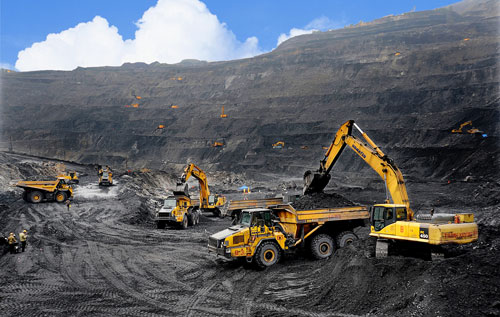Classification of Groups of Mines for Exploring Primary Gold Mineral Resources
Recently, the Ministry of Natural Resources and Environment signed and issued Circular 03/2015/BTNMT stipulating regulations on the exploration and classification of reserves, and levels of primary gold mineral resources.
In accordance with Article 9 of Circular 03/2015/BTNMT, the division of exploration mine groups is prescribed as follows based on the following grounds:

Division of primary gold mineral exploration mine groups (Illustrative image)
- Based on the shape, size, and position of primary gold ore bodies, the stability of thickness, variation of gold content, and complexity of geological structure of the mine;
- Based on quantitative indices evaluating the variation of thickness, content of ore bodies, and geological conditions for mining in order to divide exploration mine groups;
- Based on specific arguments and evaluations of the main primary gold ore bodies, which account for no less than 70% of the mine's reserves. The exploration mine groups are projected in the Mineral Exploration Scheme and determined in the Mineral Exploration Result Report.
Division of exploration mine groups into groups:
- Simple mine group (I);- Relatively complex mine group (II);- Complex mine group (III);- Very complex mine group (IV).
Conditions for grouping exploration mines
- Simple Mine Group (I):
Including mines or parts of mines with simple geological structures with vein-shaped ore bodies, large lenses that lie horizontally or gently slope, ore bodies with simple shapes; stable ore body thickness, thickness variation coefficient according to work not greater than 40%; the main useful components evenly distributed, the content variation coefficient according to individual samples not greater than 40%, and ore-bearing coefficient from 0.8-1.0;
- Relatively Complex Mine Group (II):
Including mines or parts of mines from large to medium, relatively complex geological structures with vein-shaped ore bodies, large veins, lenses; relatively stable to unstable ore body thickness, thickness variation coefficient according to work from above 40% to 100%; the main useful components distribution in ore bodies from relatively even to uneven, the content variation coefficient according to individual samples from above 40% to 100%, and ore-bearing coefficient from 0.7 to 0.8;
- Complex Mine Group (III):
Including mines or parts of mines from small to medium with complex geological structures with ore bodies in shapes like layers, veins, lens veins, clusters, columns, pipes; complex shapes of ore bodies, unstable ore body thickness, thickness variation coefficient according to work from above 100% to 150%; the main useful components unevenly distributed, the content variation coefficient according to individual samples from above 100% to 150%; ore-bearing coefficient from 0.6 to 0.7;
- Very Complex Mine Group (IV):
Including mines or parts of mines with very small to small geological structures very complex, with ore bodies of small to very small sizes, vein shapes, network veins, lens veins, columns, clusters...; very complex shapes of ore bodies, particularly unstable ore body thickness, thickness variation coefficient according to work above 150%; the main useful components' content variation particularly uneven, the content variation coefficient according to individual samples above 150%; ore-bearing coefficient below 0.6.
For more details, refer to Circular 03/2015/BTNMT, effective from April 1, 2015.
Thu Ba
- In 2025, aiming to provide public services without dependencies on administrative boundaries in Vietnam
- Structure of the Digital Competency Framework for learners in Vietnam from February 11, 2025
- Circular No. 07/2025/TT-BTC providing guidance on Decree No. 178 regarding organizational restructuring in Vietnam
- Guidance on approval for land expropriation related to national defense, security in Vietnam according to Article 84 of the Land Law 2024
- What are cases in which the original cost of inland waterway infrastructure assets in Vietnam is adjusted?
- Guidelines on maintenance of works belonging to inland waterway infrastructure assets in Vietnam
-

- Procedures for declassification ahead of time ...
- 15:57, 06/02/2025
-

- Notable new policies of Vietnam to be effective ...
- 15:32, 06/02/2025
-

- In 2025, aiming to provide public services without ...
- 15:30, 06/02/2025
-

- Funding levels to ensure the operations of People ...
- 15:19, 06/02/2025
-

- Guidelines on the management and publication of ...
- 15:14, 06/02/2025
 Article table of contents
Article table of contents
